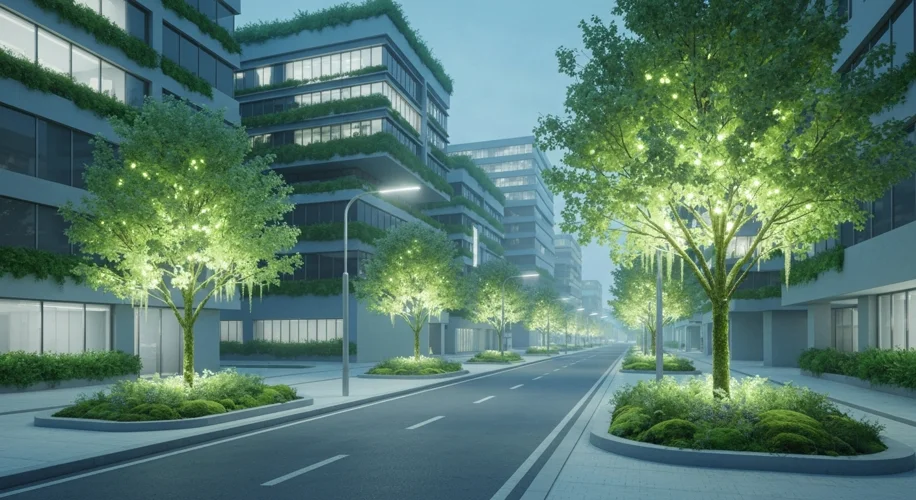Imagine walking down a city street at night, not under the harsh glare of electric lamps, but bathed in the soft, natural glow of plants. This isn’t science fiction anymore; researchers are actively exploring the potential of genetically modified, bioluminescent flora to become our future urban lighting.
This innovative approach, often referred to as “living lights” or “bio-lighting,” offers a sustainable and intriguing alternative to traditional streetlights. The core idea is to harness the power of nature itself to illuminate our nights.
How Does It Work?
At its heart, this technology draws inspiration from bioluminescent organisms like fireflies and certain fungi. Scientists are working on introducing genes responsible for light production into plants. These genes typically code for enzymes like luciferase, which, in the presence of a substrate (luciferin) and energy, emit light. The goal is to create plants that can produce a steady, visible glow.
Scientists have already made significant strides. For instance, by integrating genes from bioluminescent bacteria or fungi into plants, they’ve managed to create plants that emit a faint but measurable light. Early experiments have shown that these modified plants can glow continuously, powered by their own metabolic processes.
Why Plants for Lighting?
There are several compelling reasons to explore this avenue:
- Sustainability: Unlike electric lights that consume significant energy, bioluminescent plants would be powered by natural processes like photosynthesis. This could dramatically reduce a city’s carbon footprint and energy costs.
- Reduced Light Pollution: The light emitted by these plants is expected to be softer and more natural than the harsh, directional light from conventional lamps. This could lead to less disruptive light pollution, benefiting both human well-being and nocturnal ecosystems.
- Aesthetics: Imagine parks and public spaces illuminated by the gentle, organic glow of living plants. It could create a more serene, beautiful, and harmonious urban environment.
- Carbon Sequestration: As living organisms, these plants would also continue to absorb carbon dioxide, actively contributing to cleaner air.
The Road Ahead
While the concept is exciting, there are still challenges to overcome. Increasing the brightness of the emitted light to practical levels for street lighting is a key area of research. Ensuring the long-term stability and health of the genetically modified plants in various urban conditions is another crucial step. Public perception and regulatory approvals for genetically modified organisms in public spaces will also play a significant role.
However, the potential is undeniable. From glowing trees lining avenues to luminous shrubs in parks, these living lights could fundamentally transform our cities, making them not only more sustainable but also more enchanting places to live. It’s a fascinating glimpse into how science and nature can collaborate to create a brighter, greener future.

